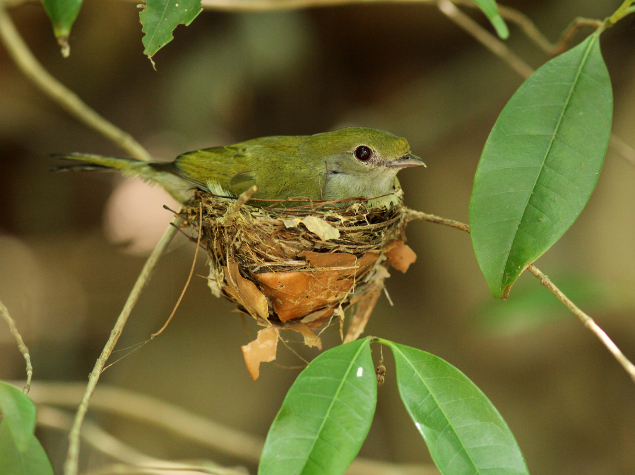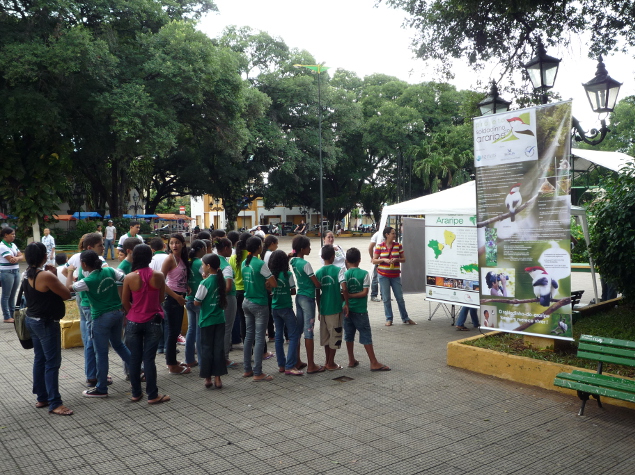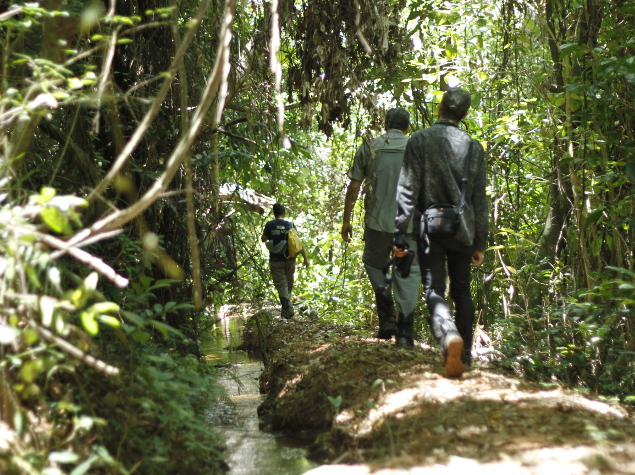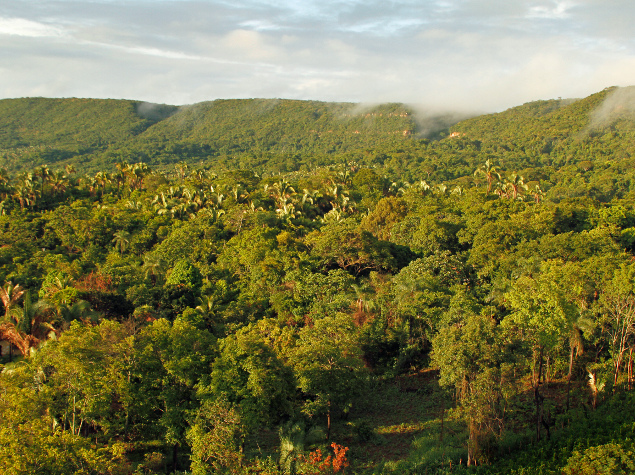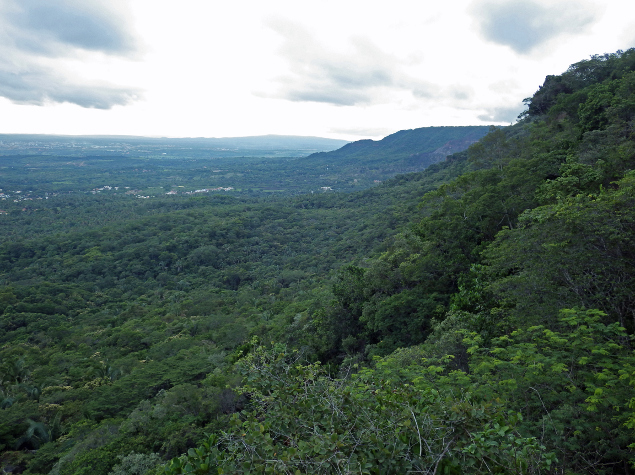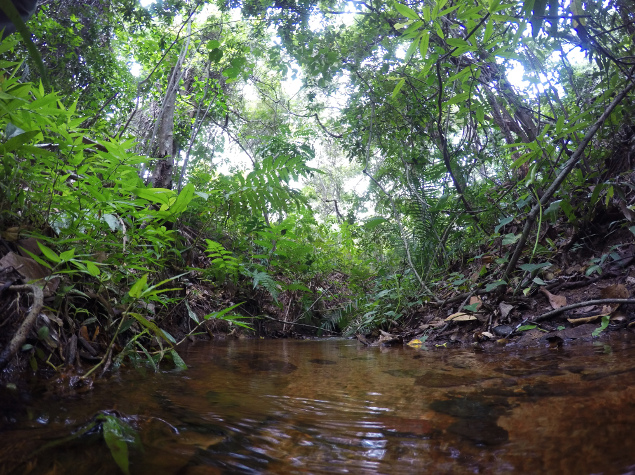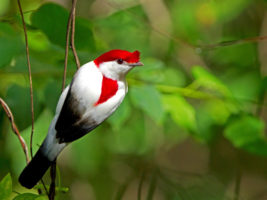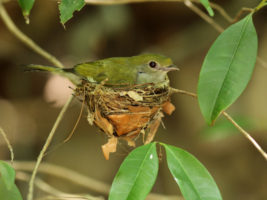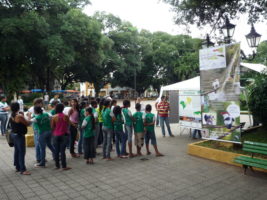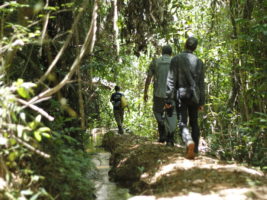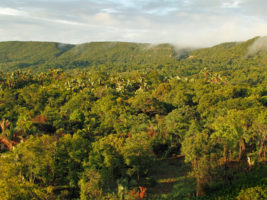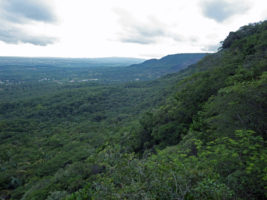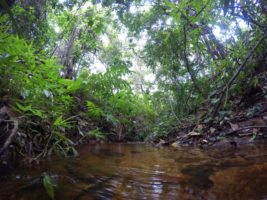Community involvement and habitat restoration to protect the Critically Endangered Araripe Manakin
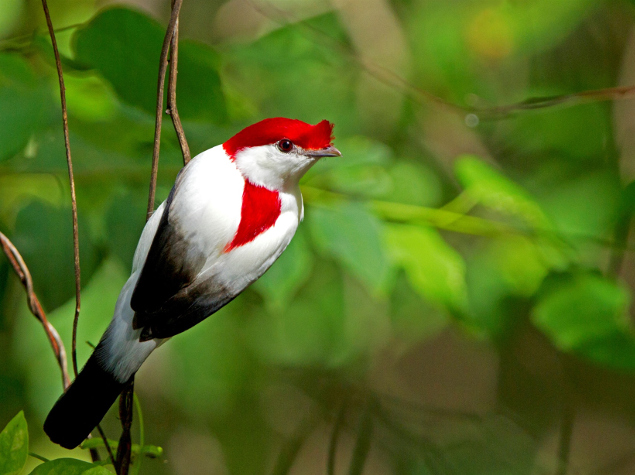
This project aims to protect the Araripe Manakin (Antilophia bokermanni), one of the most endangered birds in the world, listed as Critically Endangered by the IUCN and Brazilian red lists. The species has a very small population of less than 215 adult pairs in the wild, surviving in a 28 km2 patch of remaining moist forest habitat along the slopes of the Araripe Plateau. 130,000 people also depend on the stream and springs that flow down these slopes. A long history of water resource misuse and mismanagement has been causing a reduction in water outflow, mainly due to deforestation, forest fires, and losses in the existing water collection systems and pipes.
The aim of this project, implemented by Aquasis, is to protect and restore endangered bird habitat in the Araripe Plateau through community involvement and native forest planting.
Water conservation will be promoted through the community involvement in the Guaribas Spring. The local women communities that use this spring for washing clothes will be identified as well as local stakeholders. A participatory discussion will be held, and a low-impact water collection device will be designed and built. A before/after evaluation will be done.
Deforestation and habitat loss caused by wildfires in the Aripe Plateau will be reduced. Basic equipment for the public fire brigades in the municipality of Crato will be provided. Fire emergency will be improved through a better coordination and communication. An integrated fire response with local brigades and other selected stakeholders will be consolidated.
The bird habitat will be restored including key nesting habitat. Exotic and invasive species will be mapped and controlled. Native seeds will be collected, seedling produced and planted, supported by a botanist and local restoration expert.
The population of the Critically Endangered Araripe Mankin will be monitored. Subsidies for the management plans of private reserves and public protected areas in the Araripe Plateau will be distributed. The conservation status of the Araripe Manakin for Brazilian and IUCN red lists will be updated.
Final summary report:
The team aimed to work with lavadoras, women who clean their clothes in water springs, but it was difficult to get in touch with the owner of the targeted spring. Aquasis focalized its work on an other spring where they installed a water system enabling 500 houses (2,000 people) to have access to running water.
Moreover, the NGO provided a leaf blower to local firefighters, its air blow power being capable of extinguishing flames. An action group was created too, in order to fight bush fires. Thus, more fire starts were counted for compared to the previous years, but the surface cover of burned areas was reduced thanks to a better reactivity.
More than 1,000 seedlings were produced and planted in the reserve, including species used by the Manakin for its nest or whose fruits are eaten by it. At the same time, two invasive species were monitored in the reserve: mango trees and bamboo. Mango trees were referenced to be eliminated, because the destruction process is long (2 years) and the bamboos removed.
Finally, due to the absence of dry season, the census of the species had to be reported for one year. The data from the previous research were sent to Birdlife/IUCN for an update of the species status. A scientific publication is also planned.

